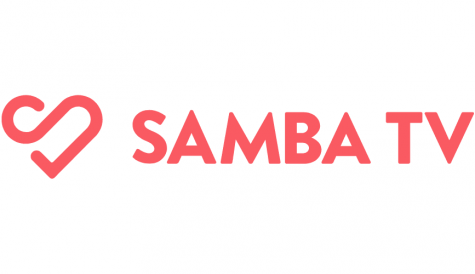Streaming and linear don’t need to be rivals
 The mass appeal of streaming has prompted certain industry leaders to declare linear TV’s demise. Free streaming platforms have indeed become an established part of audiences’ regular viewing mix, being used by almost half of UK connected TV (CTV) audiences on a daily basis – as found by a recent AudienceXpress survey – but the average UK viewer also spends upward of three hours a day watching content from TV broadcasters.
The mass appeal of streaming has prompted certain industry leaders to declare linear TV’s demise. Free streaming platforms have indeed become an established part of audiences’ regular viewing mix, being used by almost half of UK connected TV (CTV) audiences on a daily basis – as found by a recent AudienceXpress survey – but the average UK viewer also spends upward of three hours a day watching content from TV broadcasters.
As such, we could say that the TV and premium video ecosystem isn’t witnessing the death of linear, but rather it’s experiencing the rise of convergent TV.
The proliferation of streaming platforms has given viewers more choice over what to watch while creating more opportunities for brands to reach viewers in high quality environments and impactful moments. So with this in mind, how are the two houses of streaming and linear coming together as convergent TV to deliver greater value for brands?
Automation, programmatic, and addressability have founded a new era of TV
When using digital channels, marketers are able to create holistic media strategies and tailored ads using in-depth audience insights, as well as monitoring the outcome of their advertising efforts. By wielding data effectively, marketers can pinpoint the tactics and ad inventory that drive results and use this understanding to inform campaign optimisations.
Now with the advent of advanced television, digital capabilities are making this possible for TV advertising. More precise targeting methods can use accurate, privacy-safe data to ensure marketers connect with desired audiences, while addressable technology allows them to serve different ads to different viewers. By maximising ad relevance, marketers can raise the effectiveness of their TV and premium video campaigns.
What’s more, premium programmatic trading lets marketers automate media buying and gives them access to vetted, high quality ad inventory from trusted providers. Automation technologies such as ad podding are also aligning premium video environments with linear TV’s standards, ensuring competitive separation and curated ad breaks where the overall duration, individual ad length, and ad volume is carefully determined by the media owner. The convergence of digital and TV is opening up new opportunities as well through innovative, interactive ad formats, which enable TV and premium video campaigns to make an impact at the bottom of the funnel.
In the realm of measurement, meanwhile, advanced solutions are giving buyers insight into which ad inventory is delivering against campaign objectives so they can adjust media spend. These capabilities are attracting greater marketing budgets and fuelling the growth of multiple TV and premium video channels.
Clarifying the complex family of emerging channels
Consumers’ appetite for quality video content is diversifying their viewing habits and contributing to the proliferation of TV-like video channels. With the ecosystem now being home to an extensive family of platforms and services, knowing who’s who is important for standardisation and helping the different players in the ecosystem communicate.
The video-on-demand and streaming branch of the family includes:
- Ad-supported video-on-demand (AVOD), which is a streaming service that contains ads in exchange for giving viewers free access to a catalogue of on-demand premium conten
- Broadcaster video-on-demand (BVOD), meanwhile, is a streaming service owned by a broadcaster and offers audiences the ability to watch original content or rewatch content originally aired on linear TV.
- Subscription video-on-demand (SVOD) platforms have a paid-for business model where audiences opt in to a regular subscription fee for access to video content that doesn’t include ads.
- Hybrid or subscription ad-supported video-on-demand (HVOD/SAVOD) platforms give viewers multiple ways of accessing content, both paid and free, with free or discounted tiers usually including ads.
- Free ad-supported streaming television (FAST) consists of live streaming services that give audiences a linear-like viewing and advertising experience.
All these services occupy the convergent TV landscape, which is characterised by the ability to operate TV inventories through advanced digital capabilities. With this intense diversification, it’s easy to believe emerging and growing channels have the potential to usurp linear TV, but that is not the case.
A happy marriage rather than a clash of rivals
By uniting convergent and linear TV, marketers can finally seize the full power of TV and achieve business goals all along the funnel. Due to its long-form ads and high impact creative, linear TV and its trusted, high quality viewing experience is renowned for generating brand awareness. But what about driving prospects further along the funnel?
Web analytics can monitor minute-by-minute uplifts to website traffic and help marketers attribute these trends to their TV and premium video campaigns. These analytics tools can account for additional traffic sources, including referrals, paid ads, email campaigns, and social media, to accurately assess the performance of TV ads. Marketers can gain a view of not only increases to website visitors, but also to newsletter subscriptions or account registrations, products added to shopping carts, sales, and returning customers.
This represents the whole marketing funnel, meaning marketers can evaluate the impact of TV and premium video campaigns at each point in the journey and optimise ad buying accordingly. Since emerging channels also give brands the ability to connect with non-linear viewers and boost incremental reach, as well as connect with audiences throughout the funnel, streaming and linear are not competing against each other. They are, in fact, completing each other.
Stefanie Briec, is director, head of demand sales UK & international, AudienceXpress at FreeWheel



